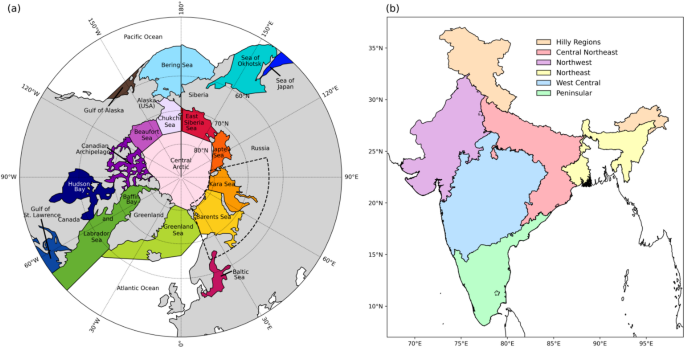Impact of spring sea ice variability in the Barents–Kara region on the Indian Summer Monsoon Rainfall - Scientific Reports
The rapidly changing Arctic climate significantly influences global weather systems primarily through high latitude teleconnections. While the Arctic-midlatitude interaction is well documented, the linkages between Arctic and tropical systems, particularly the Indian Summer Monsoon Rainfall (ISMR) is still in the nascent phase. This study investigates the impact of spring (March–May) sea ice anomalies in the Barents–Kara (B–K) region on ISMR patterns from 1959 to 2021. By categorizing years based on low- and high-sea-ice covers, we identify distinct atmospheric circulation patterns that modulate monsoonal variability over India. In the low-sea-ice years, reduced ice cover over the B–K region induces negative summer sea level pressure anomalies, triggering cyclonic activity and initiating a southward-propagating Rossby wave train. This wave train exhibits a distinct ridge-trough-ridge-trough pattern from Europe to the Far East and the North Pacific, shifting the subtropical westerly jet southward. This displacement enhances subsidence, suppresses convection over the Indo-Gangetic Plain, and ultimately reduces the monsoon rainfall in this region. Conversely, high-sea-ice years exhibit a reversed circulation pattern, with negative geopotential height anomalies over the B–K region and a ridge over central Asia, promoting upper-level divergence and strengthening monsoonal convection. These findings reveal the critical role of springtime B–K sea ice in modulating summer atmospheric circulation and ISMR, highlighting the far-reaching impact of Arctic sea ce variability on tropical weather systems.
www.nature.com · Nature
